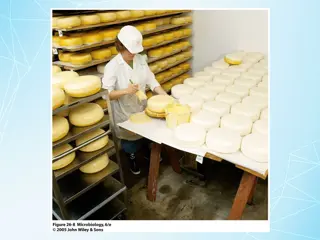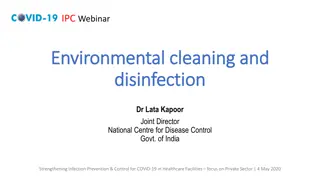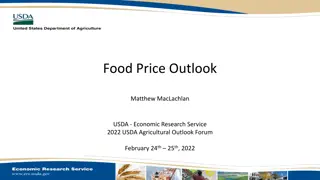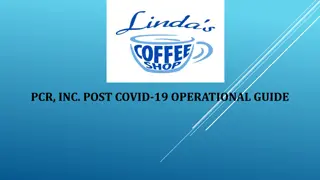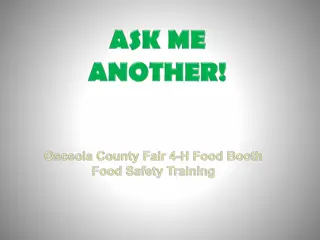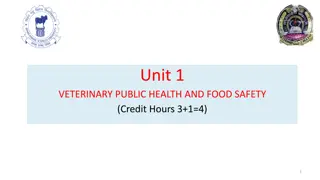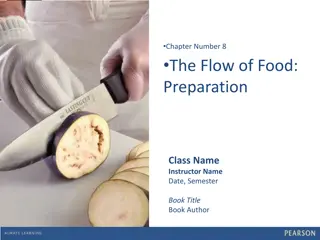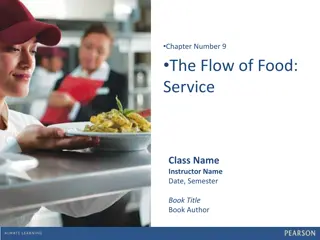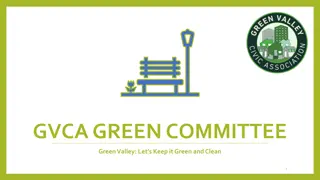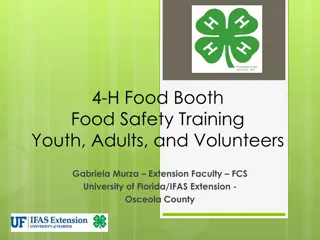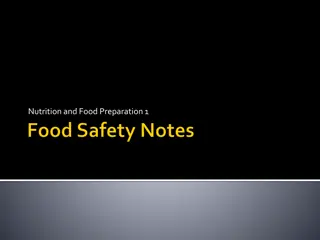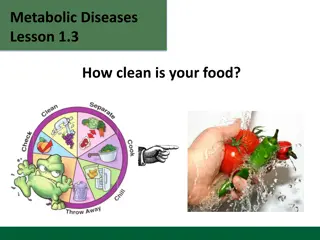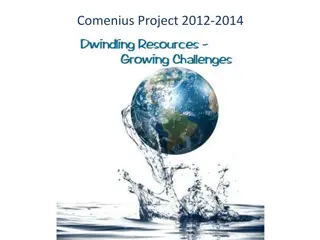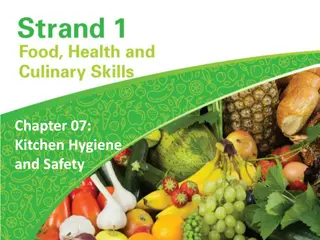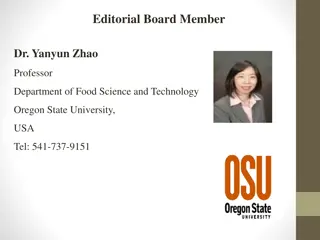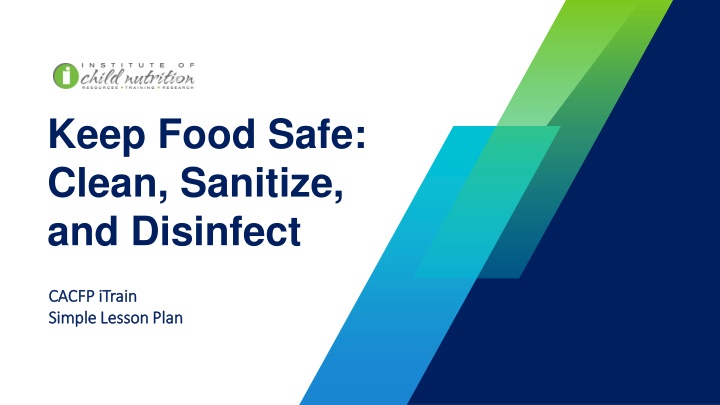
Keep Food Safe: Clean, Sanitize, and Disinfect - Importance of Proper Hygiene Practices
Learn the importance of proper cleaning, sanitizing, and disinfecting to prevent contamination of food in child care facilities. This simple lesson plan covers key concepts, including washing, rinsing, and sanitizing surfaces to maintain a safe environment and reduce the risk of cross-contamination. Discover best practices and techniques to ensure food safety for children and staff.
Download Presentation

Please find below an Image/Link to download the presentation.
The content on the website is provided AS IS for your information and personal use only. It may not be sold, licensed, or shared on other websites without obtaining consent from the author. If you encounter any issues during the download, it is possible that the publisher has removed the file from their server.
You are allowed to download the files provided on this website for personal or commercial use, subject to the condition that they are used lawfully. All files are the property of their respective owners.
The content on the website is provided AS IS for your information and personal use only. It may not be sold, licensed, or shared on other websites without obtaining consent from the author.
E N D
Presentation Transcript
Keep Food Safe: Clean, Sanitize, and Disinfect CACFP CACFP iTrain Simple Lesson Plan Simple Lesson Plan iTrain
Introduction Introduction Trainer and Participants Introductions
Review Current Knowledge Review Current Knowledge What are some things that you should clean and sanitize in child care facilities?
Overview Overview
Lesson Objective Lesson Objective Demonstrate cleaning, rinsing, and sanitizing good practices to prevent contamination of food.
Cleaning and Sanitizing Cleaning and Sanitizing Reduces the opportunity for bacteria and viruses to contaminate food. Surfaces: any food contact surfaces, sinks, equipment, toys, and tables.
Maintaining Safe Environments Maintaining Safe Environments Proper cleaning and sanitizing reduces risk of cross-contamination Cross-contamination-transfer of bacteria or viruses from one surface to another.
Wash, Rinse, and Sanitize Wash, Rinse, and Sanitize Before each use Between uses when preparing different types of raw animal foods such as eggs, fish, meat, and poultry Between uses when preparing ready-to-eat foods and raw animal foods such as eggs, fish, meat, and poultry Any time contamination occurs or is suspected Before preparing an allergen-free meal
How to Wash, Rinse, and Sanitize How to Wash, Rinse, and Sanitize Wash the surface with a detergent solution to clean. Rinse the surface with clean water to remove debris and detergent. Sanitize the surface using a sanitizing solution mixed at the concentration specified on the manufacturer s label to kill microorganisms. Allow the surface to air dry to prevent recontamination.
Activity Activity Contamination Charlie
Conclusion Conclusion
Lesson Conclusion Lesson Conclusion Careful cleaning and sanitizing help keep the child care environment safe. Food contact surfaces need to be washed, rinsed, and sanitized to prevent the contamination of food and cross-contamination with other surfaces in the child care center.
Activity Activity Speed Action Planning
Thank You! Thank You! The University of Mississippi The University of Mississippi School of Applied Sciences School of Applied Sciences www.theicn.org www.theicn.org 800 helpdesk@theicn.org helpdesk@theicn.org 800- -321 321- -3054 3054 Follow ICN on Social Media! Follow ICN on Social Media! Logo Pinterest Logo Logo Logo Facebook Twitter Instagram @ichildnutrition instagram.com/theicn pinterest.com/theicn facebook.com/ichildnutrition

